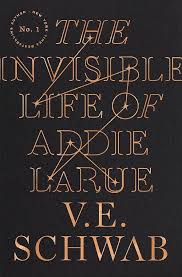Chapter VIII
byChapter VIII unfolds on a crisp September 7, 2013, in the heart of New York City, where Henry is suddenly thrust into a world of attention he never anticipated. Once an unnoticed figure in the crowd, Henry now finds himself the center of intrigue and attraction, with people drawn to him in ways that seem almost otherworldly. The experience is as exhilarating as it is unsettling, and as he moves through the city, he becomes increasingly aware of the power his presence holds over others. At first, Henry revels in the newfound admiration, enjoying the feeling of being desired, but soon, he begins to notice the artificial nature of these interactions. The realization stirs within him a sense of discomfort, as the connections he forms seem to lack depth, and the people around him are more captivated by his external appeal than who he truly is. Despite the pleasure of being seen in a new light, Henry begins to question the authenticity of these relationships, recognizing that the attention is fleeting and rooted in something other than genuine connection.
As Henry grapples with this new reality, his encounters take a turn between lighthearted moments and more serious, introspective exchanges. In a coffee shop, he meets Vanessa, who jokingly chides him for not following through on their earlier plans. This moment of playful banter stands in contrast to a more consequential meeting that occurs later with Dean Melrose, an influential figure from Henry’s academic past. The Dean, once a symbol of failure in Henry’s eyes, now offers him a second chance in the form of a teaching position at the theology school. This unexpected proposal forces Henry to pause and reflect on his path forward, torn between the allure of redemption and the lingering discomfort of returning to a world that had once turned its back on him. He finds himself stuck in a paradox: the chance to revisit a passion from his past, but with it comes the weight of his past failures and the uncertainty of whether returning to that world will truly fulfill him or simply trap him in the same cycles he’s tried to escape.
The narrative takes another turn as Henry opens his bookstore, a space that offers a new sense of belonging and comfort. It is here that he reconnects with Bea, a long-time friend who represents a grounding force in his life. Bea’s presence, unchanged and unaffected by the external changes in Henry’s world, provides him with a sense of normalcy and stability, something he hasn’t experienced in a while. Their conversation offers a respite from the superficiality that has marked Henry’s recent interactions, reminding him of the authenticity and trust that friendships built on mutual respect can provide. Bea’s sincerity, free from the distractions of attraction or external validation, allows Henry to reconnect with a version of himself he had nearly forgotten. However, this sense of peace is interrupted when Bea shares with Henry an intriguing discovery—a series of portraits, each featuring the same mysterious woman, spanning centuries. This finding piques Bea’s curiosity and challenges Henry’s natural skepticism, suggesting a mystery that could unravel the truth behind his strange and unexplainable circumstances. The portraits, alongside Bea’s questions, bring to light a deeper layer of Henry’s story that he has yet to confront.
The themes of desire, identity, and authenticity are skillfully woven together in this chapter, highlighting Henry’s internal conflict as he navigates the complexities of his newfound charm and the superficiality of his relationships. The chapter underscores the tension between the intoxicating power of being wanted and the emptiness that comes with not being truly known or understood. As Henry continues to confront these conflicting emotions, the reader is drawn into his journey of self-discovery, questioning the true nature of connection and the cost of living in a world where appearances often overshadow deeper truths. The introduction of Bea’s discovery and the mysterious portraits adds a layer of intrigue and mysticism to the narrative, signaling that Henry’s search for meaning and authenticity is far from over. The complexities of human relationships, the search for one’s true self, and the exploration of what it means to be seen and understood are central to the narrative, making this chapter an essential turning point in Henry’s story. Through these events, the chapter builds a narrative that challenges both the protagonist and the reader to reconsider what it means to live authentically in a world that often demands conformity.


